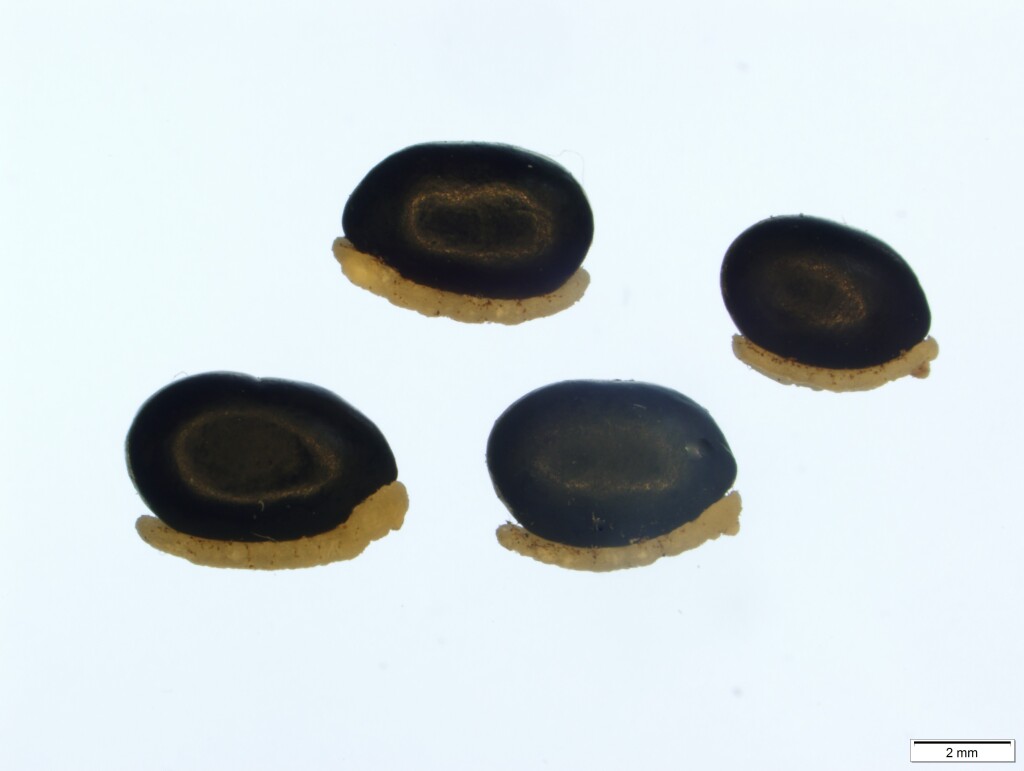Hovea corrickiae
J.H.RossShrub or slender tree to 5 m high; branchlets with dense, appressed to slightly spreading, ± straight or curled hairs. Leaves narrow-ovate or elliptic, mostly 3–11.4 cm long, 0.7–2 cm wide; apex obtuse or acute, with a short mucro; upper surface dark green, glossy, ± flat either side of depressed midrib; lower surface with dense coiled or curled hairs; stipules narrowly ovate, to 1.2 mm long. Inflorescences usually 2- or 3-flowered, or the axis extending into a many-flowered leafy shoot to 12 cm long; pedicels 5–9.5 mm long; bract inserted 4.5–8 mm below bracteoles; bracteoles inserted at or just below calyx; upper lobes of calyx 6–6.5 mm long (including tube); corolla pale to deep mauve or occasionally white; standard 9.5–10.5 mm long (including claw); stamen-filaments 4.5–5.5 mm long. Pod shortly stipitate but stipe not exceeding calyx; seeds dark brownish-black, often mottled yellow to reddish-brown. Flowers Sep.–Oct.
CVU, GGr, DunT, HSF, VAlp. Also Tas. In Victoria confined to areas of high rainfall in the Victoria and William Ranges in the Grampians and in nearby Black Range. Favours tall open-forest, usually with a dense shrub layer. The localities of records further east are suspected of being errors.
Ross, J.H. (1996). Hovea. In: Walsh, N.G.; Entwisle, T.J., Flora of Victoria Vol. 3, Dicotyledons Winteraceae to Myrtaceae, pp. 804–808. Inkata Press, Melbourne.
 Spinning
Spinning
